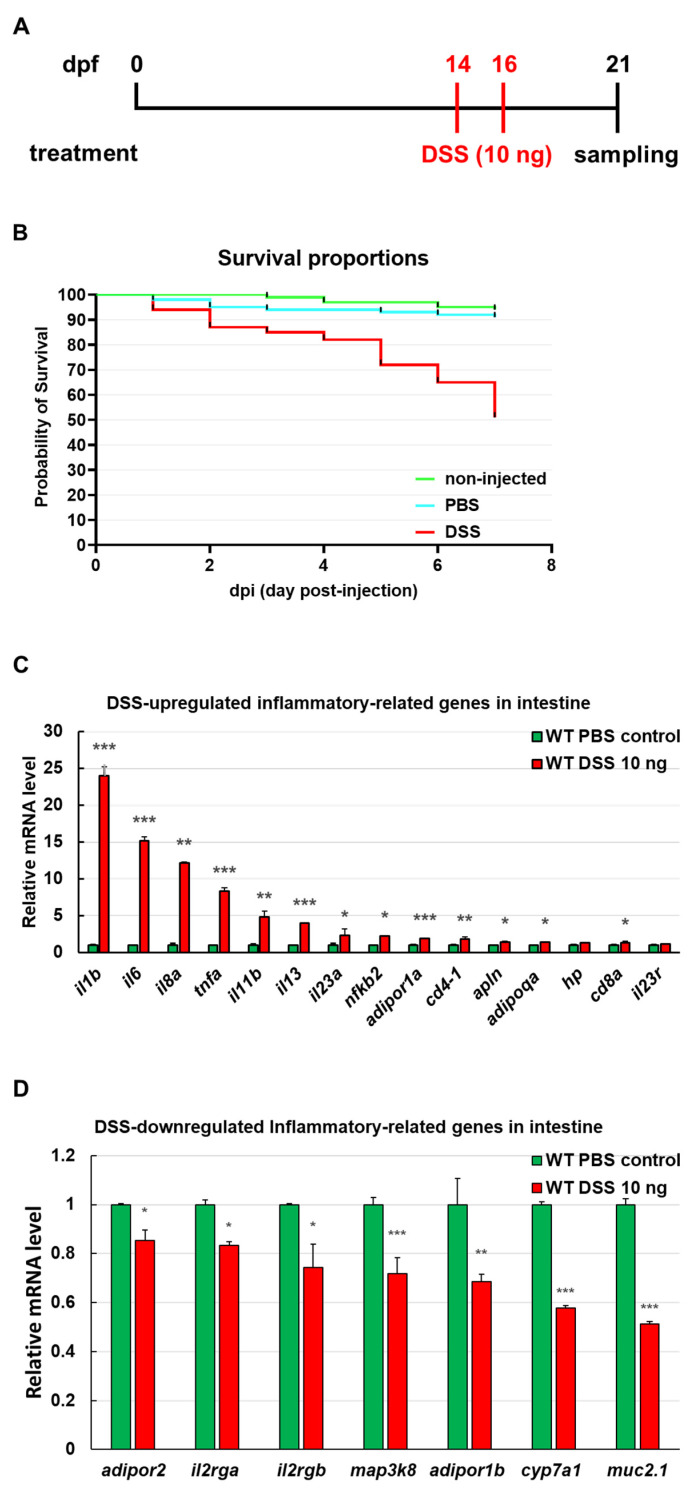Figure 2
Figure 2
Identification of the gene markers of intestinal inflammation in zebrafish. (A) Schematic diagram of the dextran sodium sulfate (DSS) treatment strategy. Wild-type (WT) larvae were injected with PBS and 10 ng DSS twice at 14 and 16 days post-fertilization (dpf), and expression of the gene markers of intestinal inflammation was analyzed using RT-qPCR at 21 days post-fertilization (dpf). (B) Survival proportions of injected WT larvae from 0 dpi (days post-injection) to 7 dpi (14 to 21 dpf, p < 0.0001, n = 100 in three independent experiments). The survival rate of DSS-injected WT larvae was approximately 50%. The survival rates were not significantly different between non-injected and PBS-injected WT larvae (>90%). (C,D) RT-qPCR analysis of inflammation-related genes in the intestines of PBS- and DSS-injected WT lines at 21 dpf. mRNA expression levels were normalized to gapdh in the intestine of PBS-injected WT controls. Statistically significant differences from the PBS-injected WT control are denoted by * (p < 0.05), ** (p < 0.01), and *** (p < 0.001) for all panels.

